away in the rain.
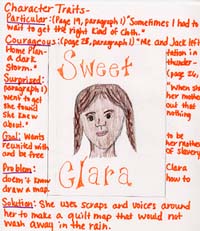
Discussion Director
Your job is to develop questions group members will discuss about this
portion of the book; decide important ideas and issues raised in this section
of the book and design questions that address them.
Examples: Setting, Problem-Solving, Narrator, Topic, Main Idea,
Cause-Effect, Mood, Character Relationship, and Compare/Contrast
You will want to begin questions with words like:
Who, What, Where, When, Why, How, Tell, Describe
Character:
1. Why did Clara feel she could not
sleep under the quilt?
(page 22, par.
3 – Clara felt that it would not be restful to sleep under the blanket.)
Setting - MCEOG:
2.Where did the quilt end up?
A. In the Big House
B. Clara took it to show
her mom
C. It stayed with Aunt Rachel
D. Lost in the woods
(page 22, par. 3 –
C.
It stayed with Aunt Rachel-“I think it should stay here. Maybe
others can use it.)
Problem/Solution:
4. Clara had never been off the plantation so she really did not have
a clue as far as landmarks to
put on her quilt to make it accurate. How
did Clara make her quilt accurate?
(People would stop the Big House and share information
that they had heard and things that they
had seen.)
Cause/Effect:
5. Aunt Rachel could not make the journey, what was the cause of this?
(Page 27, Paragraph 2 - She was too old to walk.)
Opinion:
6. How does this story make you feel?
I was very happy when Clara made it back to her
mother and escaped to freedom. I do not like
the whole idea of slaves. It was not right that
people were treated like property and not taken
into consideration that they were just as equal
as the white people.
Passage Picker
Your job is to select significant passages from the sections being
read; determine why it is important; call other readers’ attention to the
passage and lead a discussion on it.
Steps:
1. Pick
out a passage you would like to share.
2. Write
down the page and paragraph number.
3. Write
down the first two words and the last two words of your passage.
4. Write
down the reason you chose the passage, and explain why.
5. Ask
a question about your passage, and give and answer.
6. Write
down the Author’s Purpose: To Describe, To Entertain, To Inform,
or To Persuade.
1. Passage One – Descriptive
2. Page 19, par. 1
3. “Sometimes I … all pink.”
4. I chose this passage because it was really descriptive;
the author’s words made this passage
come to life.
5. Q: What was Clara’s purpose for making the
Big House and the
Quarters pink?
A: Because the Missus wore
a lot of pink and she (the Missus) was
a representation of the Big House.
6. Author’s Purpose: To Describe
1. Passage Two – Historical
2. Page 22, par. 1
3. “She touched… Ohio River.”
4. I choose this passage because it talks about a
landmark (station) that the slaves often crossed
when trying to reach freedom.
5. Q: What was the bright star at the top of
the quilt?
A: The North Star (which
represented freedom)
6. Author’s Purpose: To Inform
1. Passage Three – Descriptive
2. Page 26, par. 3
3. “Momma, I’m…the way.”
4. This passage was emotional for me, because it
was the first time that Clara had seen her Mom
since, she was sent away.
Her Mom gave her life and now Clara is giving her Mom freedom.
5. Q: What did Clara find when she stepped
into her Mother’s cabin?
A: She found out that she
had a little sister.
6. Author’s Purpose: To Describe
1. Passage Four – Descriptive
2. Page 27, par. 2
3. “Before you…to freedom.”
4. I chose this passage because it was very emotional.
Even though Aunt Rachel was too old
to travel to freedom, she stated that
she was not too old to dream of freedom and help other
escape to freedom.
5. Q: Why did Aunt Rachel not go with Clara
and Jack?
A: Because she was too old
to walk the long distance.
6. The Author’s Purpose: To Describe
Character Sketcher
Your job is to develop a character map of major characters in the text.
You will find three words that describe the character. For each word,
or character trait, you will give the proof, or example. The next
thing you will do is to tell one of your character’s goals, or what the
character wants to do in that chapter(s). Then you will find one
of the character’s problems in that chapter(s) and the solution or possible
solution to the problem. Finally, you get to have fun and illustrate
your character.
Clara
Character Traits:
Particular: (page 19, par.
1) “Sometimes I had to wait to get the right kind of cloth.”
Courageous: (page 23, par. 1) “Me and Jack left Home Plantation in a dark thunderstorm.”
Surprised: (page 26, par. 1) “When
she went to get her mother, she found out that she had a
little sister that
she knew nothing about.”
Goal: Wants to be reunited with her mother and be free of slavery.
Problem: Clara doesn’t know how to draw a map.
Solution: She uses scraps
and the voices around her to make a quilt map that would not wash
away in the rain.

Word Wizard
Your job is to search the section of text for words that are key to
understanding what is happening in the story; notes on the page and sentence
where it is found; check the dictionary meaning of the word; lead a discussion
about the meaning and intent of the word from context and what the word
contributes to the importance of the passage. On your recording sheet,
first write the word and the page number. Then, write one of the
following:
Definition
The sentence using the word
Your own sentence using the word
1. Stitches (page 22, par. 1)
2. “She touched the stitches lightly, her fingers
moving slowly over the last piece I’d added – a
hidden boat that would carry us
across the Ohio River.”
3. Stitches – One in and out movement of a threaded
needle in sewing.
4. Stitches – Something that holds something else
together.
5. Noun
6. The stitches along the edge of the quilt were
so small you could barely see them.
7. Word Wizard Card
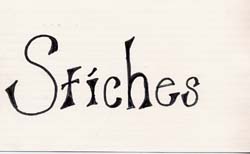
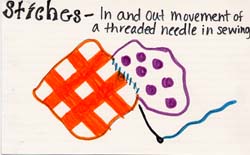
1. Skirting (page 26, par. 5)
2. “We kept on as fast as we could, skirting farms and
towns and
making our way through the woods.”
4. Skirting – To form or run along the edges of something.
5. Skirting – To run along the border.
6. Verb
7. We ran along the fence skirting the field.
8. Word Wizard Card
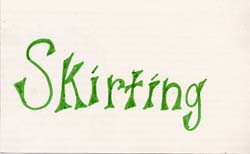
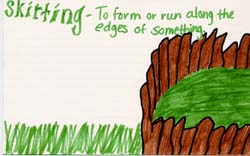
1. Shivering (page 26, par. 7)
2. “Shivering and hungry and scared, we stood looking ahead.”
3. Shivering – To break into small pieces.
4. Shivering – To shake gently.
5. Verb
6. It was so cold out, that we were shivering.
1. Freedom (page 27, par. 2)
2. “And maybe I can help others follow the quilt
to freedom.”
3. Freedom – The condition or state of being free;
political independence.
4. Freedom – being able to be free; speak your mind.
No one having control over you.
5. Noun
6. As citizens of the United States, we have the
freedom of speech.
Front Page News
Using event and historical information from your book
Sweet Clara and the Freedom Quilt, create a front page newspaper.
